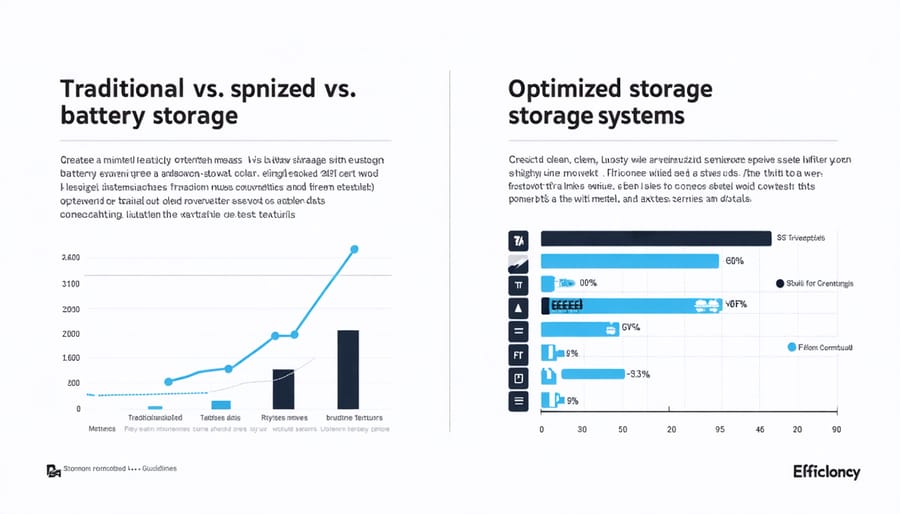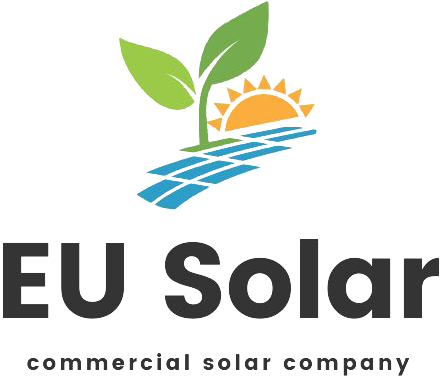Renewable energy optimization represents the cutting-edge intersection of technology, data analytics, and sustainable power management, transforming how organizations maximize their clean energy investments. As global energy demands intensify and sustainability targets become increasingly stringent, businesses are leveraging advanced optimization techniques to extract maximum value from their renewable energy systems while minimizing operational costs.
By combining artificial intelligence, real-time monitoring, and predictive analytics, renewable energy optimization enables organizations to achieve up to 30% higher system efficiency and significantly reduced maintenance costs. This sophisticated approach encompasses everything from precise load balancing and storage management to weather pattern integration and demand response optimization.
For decision-makers navigating the complex landscape of sustainable energy solutions, optimization serves as the crucial bridge between initial renewable energy investments and long-term operational excellence. Whether managing a solar installation, wind farm, or hybrid system, proper optimization strategies ensure maximum return on investment while maintaining system reliability and grid stability.
This strategic framework not only enhances current performance but also provides the flexibility to adapt to evolving energy needs, regulatory requirements, and technological advancements, making it an essential component of any forward-thinking energy management strategy.
The Core Components of Renewable Energy Optimization
Energy Production Analysis
Energy production analysis is fundamental to optimizing renewable energy systems, particularly in off-grid solar technology implementations. Modern monitoring systems utilize advanced sensors and data analytics to track real-time energy generation, providing crucial insights into system performance and efficiency. These systems collect data on solar panel output, weather conditions, and consumption patterns to create accurate production forecasts.
By implementing sophisticated monitoring solutions, facility managers can identify performance issues before they impact operations, optimize maintenance schedules, and make data-driven decisions about system expansion. Forecasting capabilities have evolved significantly, incorporating machine learning algorithms that analyze historical data alongside weather predictions to estimate future energy production with increasing accuracy.
This predictive approach enables organizations to better manage energy storage systems, adjust consumption patterns, and maintain optimal grid stability. For commercial installations, this translates into improved ROI through reduced downtime, enhanced system longevity, and more efficient resource allocation. The integration of these monitoring and forecasting tools has become essential for maximizing the benefits of renewable energy investments.

Storage Management Systems
Storage management systems play a crucial role in maximizing the efficiency of renewable energy installations. Modern battery systems, coupled with sophisticated management software, enable organizations to store excess energy during peak production periods and utilize it during high-demand times or when renewable sources are unavailable.
Advanced battery management systems (BMS) optimize charging and discharging cycles, extending battery life and improving overall system performance. These systems monitor key parameters such as temperature, voltage, and state of charge in real-time, automatically adjusting storage protocols to maintain optimal conditions.
Energy storage solutions now incorporate predictive analytics and machine learning algorithms to forecast energy demand patterns and weather conditions. This intelligence allows facilities to make informed decisions about when to store, use, or sell excess energy back to the grid, maximizing cost savings and operational efficiency.
For example, a manufacturing facility in California implemented a smart storage system that reduced peak demand charges by 30% while providing critical backup power during grid outages. The system’s sophisticated management algorithms ensure seamless integration with existing renewable energy sources, creating a reliable and cost-effective energy ecosystem.

Supply Chain Integration for Maximum Efficiency
Inventory Management
Effective inventory management is crucial for maintaining reliable off-grid solar systems and optimizing renewable energy operations. Strategic component stockpiling ensures continuous system performance while minimizing downtime and operational disruptions.
A well-structured inventory management approach includes maintaining optimal stock levels of critical components such as solar panels, inverters, batteries, and maintenance parts. This requires implementing sophisticated tracking systems that monitor usage patterns, lead times, and seasonal demand fluctuations. Organizations should establish minimum and maximum inventory thresholds based on historical data and predictive analytics.
Distribution networks play a vital role in ensuring timely component availability across multiple locations. Creating regional distribution hubs can significantly reduce response times for maintenance and repairs while optimizing transportation costs. Modern inventory management systems often incorporate IoT sensors and real-time monitoring to automate reordering processes and prevent stockouts.
Best practices include:
– Regular inventory audits and reconciliation
– Implementing just-in-time delivery for non-critical components
– Maintaining emergency reserves for essential parts
– Developing relationships with multiple suppliers
– Using predictive maintenance data to inform stock levels
By adopting these strategies, organizations can reduce carrying costs while ensuring system reliability and maintaining optimal performance levels throughout their renewable energy infrastructure.
Demand Forecasting
Demand forecasting plays a crucial role in renewable energy optimization by enabling organizations to predict and plan for future energy needs with greater accuracy. Through advanced analytics and machine learning algorithms, modern forecasting systems analyze historical consumption patterns, weather data, seasonal variations, and operational schedules to generate precise energy demand predictions.
These predictive insights help facility managers optimize their renewable energy systems by adjusting production capacity, storage requirements, and distribution strategies. For instance, a manufacturing facility can use demand forecasting to schedule energy-intensive operations during peak solar generation hours, maximizing the use of renewable resources while minimizing reliance on grid power.
The integration of smart meters and IoT sensors provides real-time data that enhances forecasting accuracy. This data-driven approach allows organizations to:
– Optimize energy storage systems based on predicted demand patterns
– Schedule maintenance during low-demand periods
– Improve resource allocation and capacity planning
– Reduce energy waste and associated costs
– Enable more efficient grid integration
For multi-site operations, demand forecasting becomes particularly valuable as it helps balance energy distribution across different locations. Companies can leverage these insights to negotiate better power purchase agreements and optimize their renewable energy investments based on projected consumption patterns.
By implementing sophisticated demand forecasting systems, organizations typically achieve 15-25% improvement in energy efficiency and significant cost savings through better resource management and reduced peak demand charges.
Real-Time Monitoring and Control Systems
Performance Metrics
Performance metrics play a crucial role in evaluating and optimizing renewable energy systems. Key indicators include energy yield ratio (EYR), which measures the total energy output compared to input, and capacity factor (CF), indicating how effectively a system operates relative to its maximum potential. System efficiency, typically expressed as a percentage, remains a fundamental metric that guides optimization efforts.
Cost-related metrics such as levelized cost of energy (LCOE) and return on investment (ROI) help stakeholders assess financial performance. These indicators account for initial capital costs, operational expenses, and expected energy generation over the system’s lifetime. Energy storage efficiency and response time are particularly relevant for systems incorporating battery storage solutions.
Environmental impact metrics, including carbon offset measurements and lifecycle emissions analysis, demonstrate sustainability benefits. Grid integration metrics such as power quality, voltage stability, and frequency regulation are essential for systems connected to existing power infrastructure.
Real-time monitoring systems track performance ratios (PR) and specific yield (kWh/kWp), enabling quick identification of optimization opportunities. Weather-adjusted performance indices help normalize these metrics across different environmental conditions, providing more accurate comparisons and optimization targets. Regular analysis of these metrics ensures continuous system improvement and maximum value generation from renewable energy investments.
Automated Adjustment Systems
Modern renewable energy systems leverage sophisticated grid optimization software and automated adjustment technologies to maximize efficiency and performance. These smart systems continuously monitor various parameters, including weather conditions, energy consumption patterns, and grid stability, making real-time adjustments to optimize energy production and distribution.
Advanced algorithms analyze historical data and real-time inputs to predict energy demand and adjust generation capacity accordingly. For example, automated systems can intelligently manage battery storage, deciding when to store excess energy and when to release it based on demand forecasts and pricing signals.
These systems also incorporate adaptive learning capabilities, becoming more efficient over time as they gather data about facility-specific usage patterns and environmental conditions. Key features include automatic load balancing, predictive maintenance alerts, and dynamic power routing to minimize losses and maximize renewable energy utilization.
The implementation of automated adjustment systems typically results in 15-30% improvement in overall system efficiency, leading to significant cost savings and enhanced ROI. For facility managers, these systems reduce manual intervention requirements while ensuring optimal performance across all renewable energy assets.
Cost-Benefit Analysis of Optimization Solutions
Initial Investment Considerations
Implementing renewable energy optimization requires careful consideration of initial solar investment costs and long-term financial planning. The primary setup expenses typically include hardware components such as solar panels, wind turbines, energy storage systems, and smart monitoring equipment. Infrastructure modifications, including electrical system upgrades and structural reinforcements, must also be factored into the budget.
Implementation costs vary significantly based on facility size, energy requirements, and chosen technologies. For a medium-sized commercial facility, initial investments often range from $50,000 to $500,000. However, these costs can be offset through various financing options, government incentives, and tax benefits designed to promote renewable energy adoption.
Key cost considerations should include:
– Equipment procurement and installation
– System design and engineering
– Grid connection and compliance requirements
– Staff training and operational readiness
– Monitoring and control systems implementation
– Maintenance infrastructure setup
Many organizations opt for phased implementation to distribute costs over time while maintaining operational continuity. Modern financing solutions, including power purchase agreements (PPAs) and energy-as-a-service models, can help minimize upfront capital requirements while ensuring immediate cost savings through reduced energy consumption and improved efficiency.
Long-term Financial Benefits
Implementing renewable energy optimization strategies delivers substantial financial returns over time, making it an attractive investment for organizations of all sizes. The initial investment in optimization technology typically pays for itself through reduced energy costs within 3-5 years, while continuing to generate savings for decades thereafter.
Companies that have implemented comprehensive renewable energy optimization systems report average energy cost reductions of 20-30% in the first year alone. These savings compound over time as energy prices continue to rise and optimization algorithms become more refined through machine learning and data collection.
Beyond direct energy savings, optimized renewable systems require less frequent maintenance and experience fewer unexpected downtimes. This operational efficiency translates to reduced maintenance costs and extended equipment lifespan, often by 25% or more compared to non-optimized systems.
Organizations also benefit from enhanced predictability in energy expenses, allowing for more accurate budgeting and financial planning. Many businesses leverage these cost savings to fund additional sustainability initiatives or reinvest in core operations.
Consider the example of a manufacturing facility that implemented smart optimization technology: their five-year ROI showed a 156% return on their initial investment, with annual energy savings of $275,000 and reduced maintenance costs of $50,000 per year. Additionally, they qualified for various government incentives and tax benefits, further improving their financial outcomes.

Renewable energy optimization represents a critical pathway toward achieving both environmental sustainability and operational efficiency in today’s energy landscape. By implementing the strategies and technologies discussed, organizations can significantly reduce energy costs, improve system reliability, and minimize their carbon footprint. The key to successful optimization lies in taking a systematic approach: starting with comprehensive energy audits, implementing appropriate monitoring systems, and utilizing advanced analytics for continuous improvement.
Moving forward, organizations should focus on developing clear implementation roadmaps that align with their specific needs and capabilities. This includes securing appropriate funding, training personnel, and establishing partnerships with experienced renewable energy consultants. Regular assessment of optimization efforts ensures continued effectiveness and allows for necessary adjustments as technology evolves and energy needs change.
The future of renewable energy optimization promises even greater opportunities through emerging technologies like artificial intelligence and advanced storage solutions. By taking action now, organizations position themselves to leverage these innovations while contributing to a more sustainable energy future. The investment in optimization today will yield substantial returns in operational efficiency, cost savings, and environmental impact for years to come.

